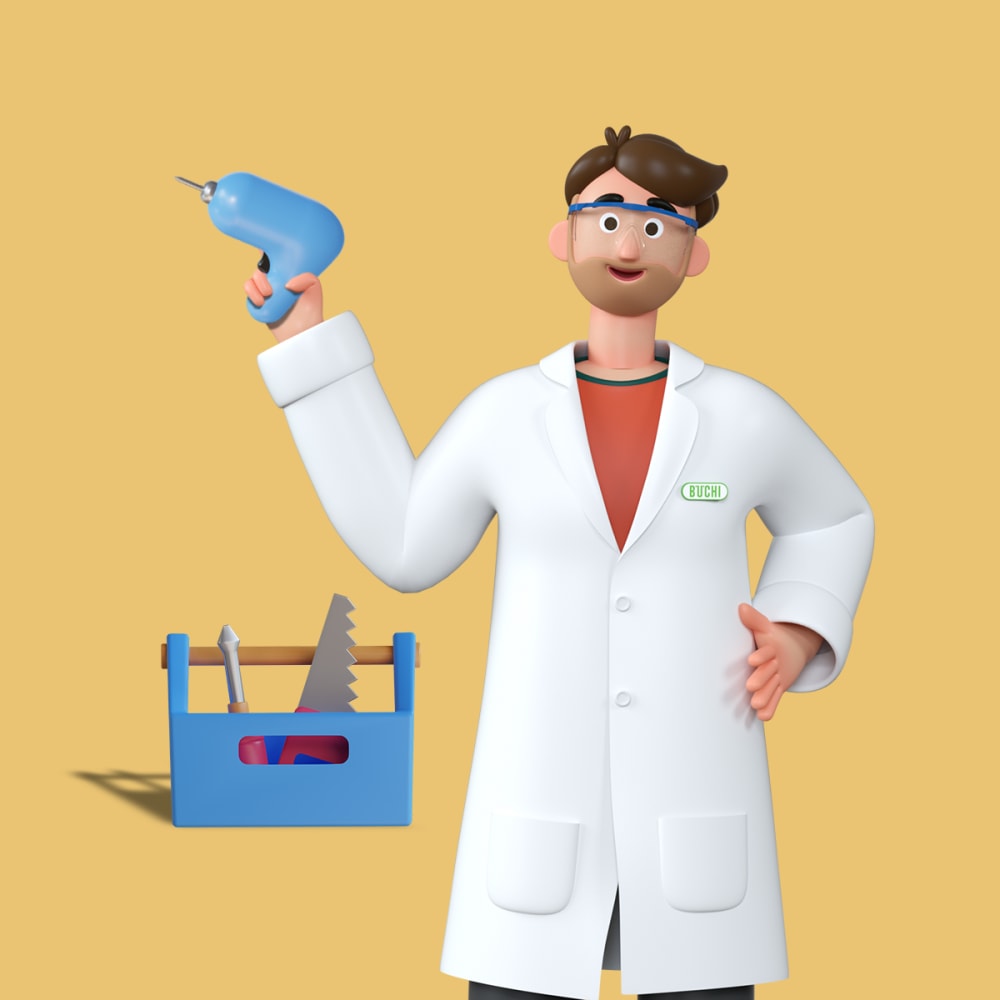Right to Repair: The New Rotary Evaporator You Can Repair Yourself

Welcome back to the ‘Colorful Researchers’ blog. Since I started the evaporation portion of this blog, I have discussed many aspects of the rotary evaporator, from the individual components to how the components work together and how the instruments can be integrated into a lab. But what happens when something goes wrong? When a component fails, the system cannot function, and if the system is down, its integration into a lab also fails, jeopardizing your workflow.
Quality is a guiding principle at BUCHI, and we have always strived to create robust instruments that can take the stresses that laboratories place on equipment. Most everyday equipment, like your laptop or hi-fi, doesn’t have to worry about encountering hazardous chemicals or being used in explosive environments. In contrast, these are often the norm for many of our instruments.
How can you maintain your lab equipment?
Obviously, maintenance and good practice are crucial to ensuring the long life of any laboratory instrument. Check out Bart's post on the topic for some handy maintenance tips. Inevitably, issues will arise over time, like the battery dying on your phone or a fuse finally going out with a bang. Some things are a simple fix, such as replacing a blown fuse, but others may require a service engineer to solve the problem.
How can you reduce downtime in the lab?
We understand that laboratories are highly integrated environments where workflows matter, and when one instrument fails, many others may be made temporarily redundant. This is why we have always prioritized providing comprehensive service packages and ensuring expert engineers are available worldwide to minimize downtime and ensure the longevity of our instruments. Regardless of a service package's effectiveness, there is always room for improvement.
The fastest solution to reduce downtime is to service an instrument yourself. However, this is not always possible for complex instruments due to the complexity of their components. I spoke about how different watches are built for various conditions and with varying levels of complexity. Maintaining and repairing a standard mechanical watch may be possible with a few basic tools; however, fixing a complex watch with numerous complications requires years of training and specialist knowledge. Certain laboratory equipment components are built to exact standards and precise tolerances for things such as ingress protection. Much like a dive watch, where opening and closing it is likely to affect its waterproof capabilities and, therefore, not recommended. This is why warranties are often affected if people perform repairs themselves, as the manufacturer cannot guarantee the instrument will subsequently work as intended. This argument is justified for complex, specialist equipment; however, many things can be performed safely by the user.
What is the right to repair movement?
The ‘right-to-repair’ movement has gained significant momentum worldwide. It advocates for legislation allowing consumers to repair their products, from smartphones to tractors. The push for these laws is driven by the growing frustration with manufacturers who design products that make them difficult, if not impossible, for the average user to repair or upgrade. This frustrates me, too, as an engineer. I once had an old laptop that was no longer under warranty and had a faulty hard drive. Replacing it would have been simple and extended its lifetime, but when I opened the laptop, I discovered the SSD had been glued in place! Such actions only increase financial and environmental costs, as consumers are often forced to replace rather than repair their broken items.
With this in mind, we designed our latest Rotavapor®, the R-80, with user-repairability in mind. Here’s how:
- Modular Design: The R-80 features a modular design, allowing users to replace parts easily without specialized tools. This design ensures that common issues can be addressed swiftly, minimizing downtime in the lab.
- Comprehensive Manuals and Tutorials: We provided detailed manuals and step-by-step video tutorials that guide users through the repair process. Whether it’s replacing a faulty seal or troubleshooting the vacuum system, our resources make it straightforward and stress-free.
- Technical Support: While our goal is to make the repair process as user-friendly as possible, we also offer technical support. Our team is available to assist with any questions or issues, ensuring users feel confident and capable of maintaining their Rotavapor®.
Creating user-repairable instruments aligns with the global trend of promoting sustainability and consumer rights and with our guiding principle of quality. It also promotes a circular economy by encouraging the reuse and refurbishment of products. This reduces waste, extends the lifespan of goods, and minimizes the need for new raw materials. With the correct maintenance and servicing, a well-built watch or rotary evaporator will function for many years, contributing to a more sustainable future.
Don’t miss our webinar: How to improve lab efficiency with the Rotavapor® R-80. Join us in embracing this new era of user empowerment and sustainable practices. The right to repair is not just a trend but a fundamental shift towards a more responsible and consumer-friendly approach to manufacturing and product design.
